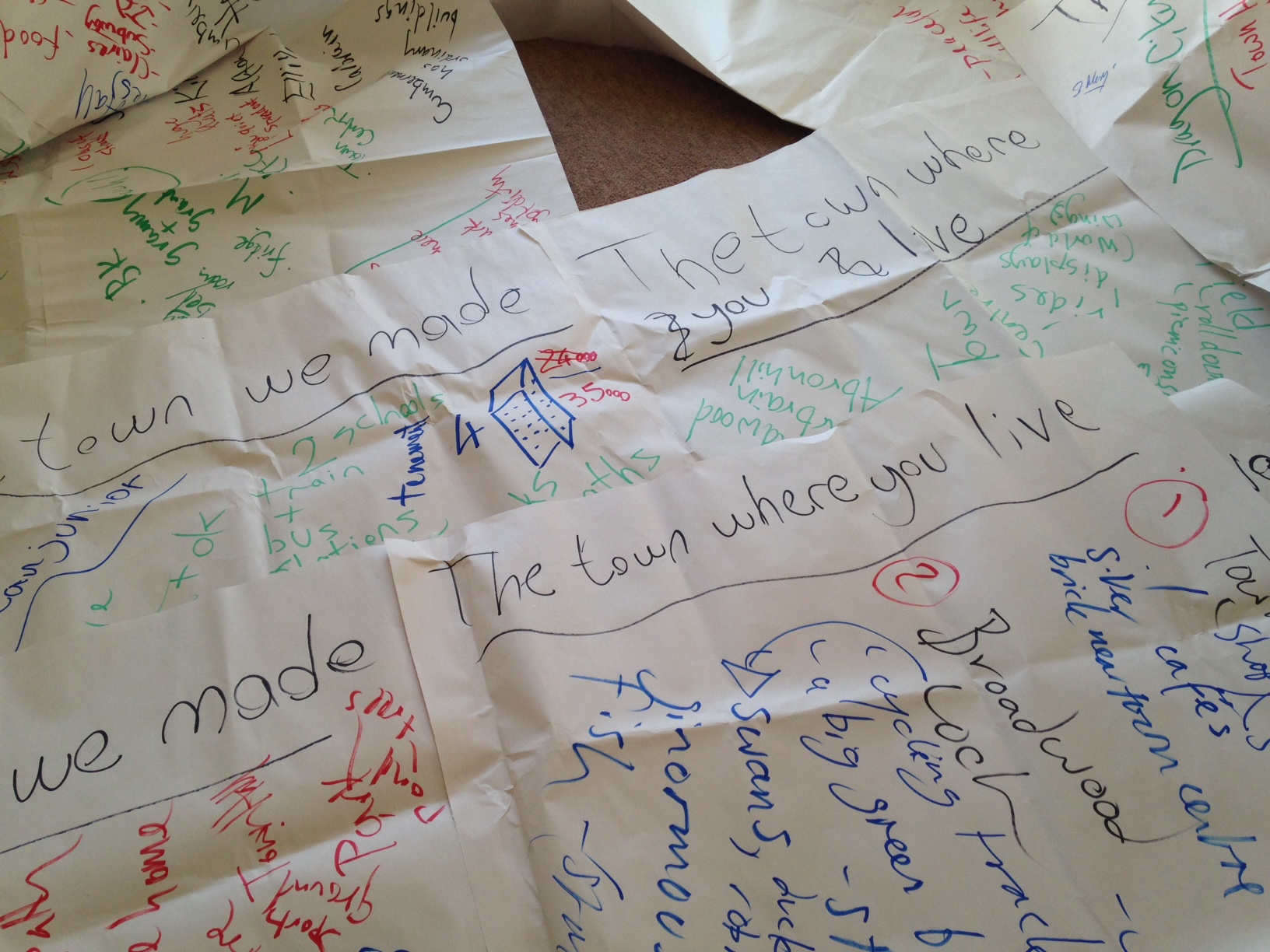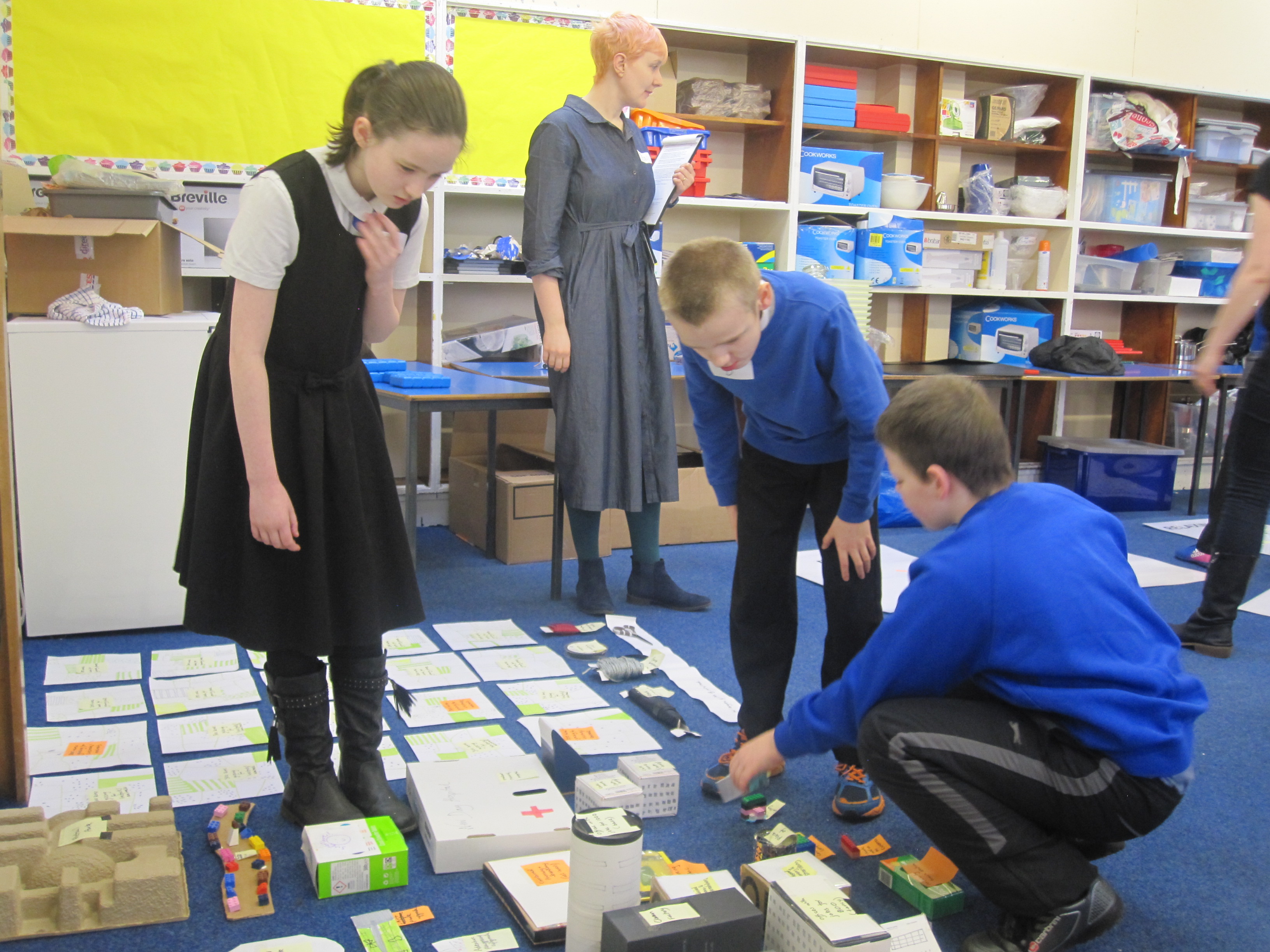Mike Nicholson has been working with pupils in Kildrum, Carbrain, St Mary’s and St Margaret of Scotland Primary Schools in Cumbernauld. Here he shares his initial reactions to the sessions with the kids and teases what stories might emerge from the sessions.

Four schools visited, eight sessions completed and the first stages of the ReimagiNation: Cumbernauld schools’ writing project are complete.
We’re now at the messy ‘lots-of-thoughts-on-paper’ stage. There’s a lot you can see but not much you could make sense of if you read through it all. The stories are still under the surface, but like bulbs hidden at the end of winter there will soon be green shoots as the first signs of life emerge. The job of the next few sessions is to nurture some story ideas into full bloom.
The children have all now taken part in Ishbel McFarlane’ new show Plan. In this excellent, highly interactive hour the children form a public jury and vote on the elements they want to include in a new post-war city, desperately needed for a tented village of 40,000 people. Once decisions are made, the jurors lay their city out using all manner of boxes, containers, shapes and tapes in the design they feel makes sense for the new residents. They then have the all-important, and sometimes contentious, decision on naming it, before considering how daily life would be in this brand new place.
My job so far has been to reflect on that session with the children; “fun but difficult” has been the headline from each group as the children describe the time and budget pressures faced, the challenge of compromising and prioritising as a team, and how it can be difficult to house everyone who is in need.



We’ve then moved on to discuss their own hometown, Cumbernauld. I tell them I’m a newcomer. Apart from an unsuccessful job interview on a slate-grey rainy day thirty years ago I have no experience of the town, so I ask them to be my tour guides and to tell me what I should see and where I should go. The answers are diverse but there are some common themes across the groups:
- The Town Centre — lots of shops and places to eat, and at times a clear gender divide (girls: clothes; boys: sports/comics; everyone: food);
- Cumbernauld Field and Glen – with open space, a hill you can roll down, paths to wooded areas and a bridge over a burn;
- Cumbernauld Village – “the oldest part”;
- Houses – “weird shapes”, “cube houses”, “connecting tunnels”;
…plus a motley collection of sports and soft play centres, statues (including the Arria by Kelpies designer Andy Scott) and even an Irn Bru factory. They also describe other places they like which turn out not to be in Cumbernauld. It seems that sometimes the lines between home and Coatbridge and Glasgow can become blurred in the journey. So can the history of when much of Cumbernauld was created: “I think it was just after 2000…”
We talk about Cumbernauld as they see it and then look at how it’s laid out, what they would change (“the weather”), and what they would like to bring there from the city they have just created – usually the fun things like parks and cinemas.
And within all of this, those little comments appear that could just be the seed of something in the coming weeks of storywriting:
- “There used to be wolves there.”
- “There’s an old clay mine. It’s creepy.”
- “The statue is like a giant mermaid.”
- “That’s where the migrating birds come to.”
- “The oldest tree in the whole area. It’s ancient. It’s just like a big log stuck in the ground.”
- “That house is all boarded up – it has a metal door – my friend told me it was haunted.”
- “That’s the best place to go for a snowball fight.”
- “We’ve made a path in the middle of nowhere.”
- “My nana moved here when she was a wee girl.”
- “I want a footpath outside my front door which I can jump on and it would take me anywhere….”
Share this Post
